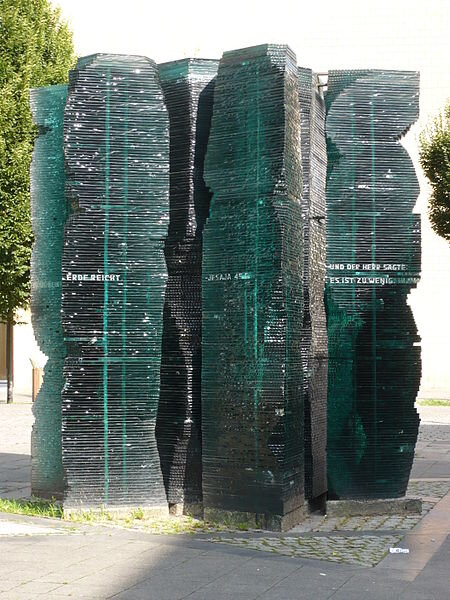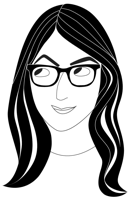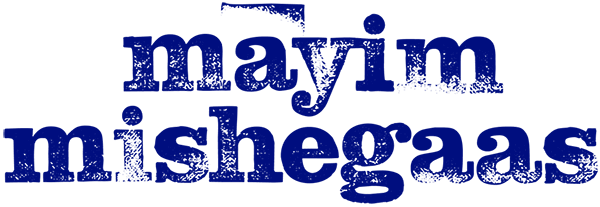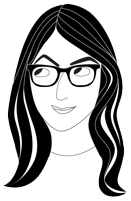
This summer, I had the pleasure and honor of speaking at RWTH Aachen University, a research university in Aachen, Germany. I spoke to a group of about 200 students and professors, most of whom were engineers, about the challenges and pleasures of being a scientist and playing one on TV.
I had one day before my talk to adjust to the time zone, which I did by getting out and about in lovely Aachen and the neighboring city of Vaals, which is actually in The Netherlands, right up against the Belgian border.
I strolled the streets of Aachen and Vaals as one of the only American tourists, and I saw churches and storefronts and open markets. I drank beer at pretty much every meal. I meandered through parks with flowers I’d never seen, and I marveled at Dutch and German architecture.
But the first thing on my list of “Things Mayim Wants To Do in Aachen” was to find the Jewish quarter, if there was even one left. You see, in every country I go to in this lifetime, I make it my business to find the Jewish museum or synagogue or the Jewish quarter. I have been to Jewish communities in Greece and Italy and Spain. I have seen the Jewish neighborhoods of France and of the United Kingdom.
Finding a Jewish community is my way of connecting when I travel; it’s a way of not feeling like I’m a lone tourist or someone just going places for the thrill of it. Rather, I am part of a global identity that always seeks to educate me and help me grow and learn. Seeing Hebrew emblazoned on a building in a country where I don’t even speak enough of the language to order a cup of tea reminds me that I may be American, but what I really am is Jewish. And so are all of the people who flock to synagogues all over the world.
Aachen had a thriving Jewish community before the Holocaust. The synagogue stood tall and proud until the Night of the Broken Glass (Kristallnacht) brought it to its knees in November of 1938. The Jews were deported. Only 25 returned after the war to rebuild. Twenty-five human beings.
I needed to see the synagogue.
I found my way to the Synagogplatzen—the plaza of the synagogue—in a very urban and kind of grimy neighborhood in Aachen. It was an international part of the city. Muslim head coverings were all around, and many languages were being spoken. I saw signs for halal meat and a sign that simply read “Iraqi Restaurant” in English and Arabic. A group of drunk men sat on benches in the plaza drinking beer, just feet from a glass sculpture, which I was certain had to be a memorial.
First, I had to find out how to get into the synagogue. The Hebrew above the doors revealed that indeed this was the synagogue. Seven pillars hung inside of double-thick bulletproof glass looking into the lobby of the building, and I struggled to see what the Hebrew was. I saw the word “barah”—the Hebrew word used for Divine creation and I knew: This was Genesis. My heart rose up: I can read this language of ours and this is Genesis. The Seven Days of Creation hung in Aachen’s synagogue. Creation. Got it.
There was no door to knock on, no sign, no bell to ring. I wandered around and around, and I was ready to give up, even though the building had lights on and I saw someone walking through the far end of the lobby. Thank goodness for my international phone plan. I turned on the international data roaming on my Droid and I googled the synagogue. I dialed the number that came up and a woman answered.
I said, “I’m standing in the courtyard.”
“No you’re not,” she said. “You’re calling from the United States.”
My phone number must have come up on her caller ID. She was not only suspicious of me, she was most certainly Jewish, telling me where I am calling from as if I don’t know. I laughed out loud.
“No, I’m using a cell phone. I am an American tourist and I want to see the synagogue. I’m in the courtyard.”
She directed me around a corner, and I was buzzed in to a circular building, with a lobby wrapping all the way around a magnificent modern prayer space. A glass Star of David hung from the ceiling. The arc was an imposing wooden dedication to the Torah.
“Know before Whom you stand,” it read. I started to cry.
I know before Whom I stand all of the time, but especially in this holy space, it was very clear. The God I believe in walks with all of humanity, and that God saw this community through fire and ash. And we rose again.
There was a door off of the lobby into a small courtyard. A chunk of brick wall stood on one end of the courtyard. This was what was left of the synagogue that stood in 1938. Know before Whom you stand.
A plaque along the length of the courtyard listed the names of congregants who have died. Name upon name, listed and listed. Names I know: Levy, Silverberg, Goldstein, Cohen. Jews and Jews and Jews. Remember.
On the other side of the courtyard, there were six metal small doors smushed together and bound with metal, laid down on a podium of concrete, like Isaac being laid on the altar by his father. The doors might have been part of the synagogue; they looked like escape hatches. Or maybe it was art. Maybe it was both. There was no sign.
A German plaque was on display describing some of what these things were. But my German is based on Yiddish and in the English alphabet German is written in, the words wouldn’t come. And with the tears forming and rushing in, the words couldn’t come.
Stones had been placed on the metal doors, as if they were a gravestone. I found a rock and placed one there, too.
Know before Whom you stand.
The Gabbai of the synagogue followed me about wordlessly. An old man. How old? What has he witnessed? I thanked the woman who let me in. I wanted to hug her and tell her how sorry I am. I am sorry for the Holocaust and for the destruction and for her having to rebuild with the money saved and hidden by the Jews the world was prepared to forget. I wanted to cry in her arms. But instead I shook her hand and I walked out into the street.
The glass pillars in the synagogplatzen had the words from Isaiah: ‘It is too light a thing for you to be My servant, to establish the tribes of Jacob, and to restore the scions of Israel, and I shall submit you as a light unto the nations, to be My salvation until the end of the earth.” God help me, I thought. Literally. Help me understand You.
We were supposed to be the light among the nations. Instead they burned down our synagogues and they put us on trains to be sent into ovens. I left that courtyard depleted.
I continued my day. I ate German food. I drank German beer. I fed the German economy. I spoke for a German university. I saw a new place and I can now say I have been to Germany. My passport says so. I won’t forget the kindness of the people of Aachen. I won’t forget how beautiful it was or how much fun I was able to have there.
But mostly what I will remember from this trip is that piece of wall. And metal doors bound together with a sign in a language that is not mine with words I don’t need to know. Because I know what happened. I know what those doors mean and what the rocks atop them mean.
And I know I am not alone in my suffering and my sadness; because I am a Jew.
And I know that it’s hard to forget. And thank you, Aachen, because now I also know it’s easy to remember before Whom you stand.




 Read More From Mayim
Read More From Mayim
Grok Nation Comment Policy
We welcome thoughtful, grokky comments—keep your negativity and spam to yourself. Please read our Comment Policy before commenting.